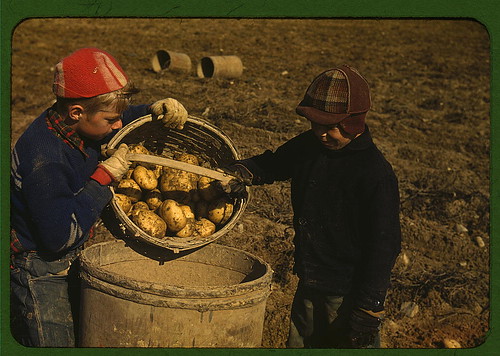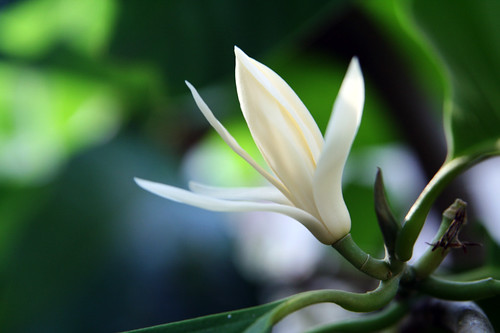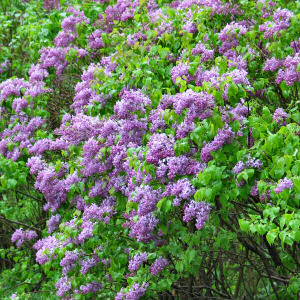Friday, August 14, 2009
LocalHarvest & CSAs
One thing that I've been interested to try out is the CSA. If we participate in it, we pay X amount of money, and the farm/s will package a box of fresh organic groceries every week depending on what's available at the time. The box will either be delivered or can be picked up at a certain time weekly or bimonthly.
I have calculated it and figured that it can be fairly comparable to buying a week's worth of fruits and vegetables on my own. For example, according to this CSA at Garden of Eden, it costs $34.75/wk for a box for 2-3 people, $41/wk for a box for 4-5 people. So, if anyone's interested, we could try it out with the bigger box for around $20/wk/2 person, which is what I'm spending on groceries anyway.
Anyone interested?
Did I mention my new goal? I am going to buy whatever is on sale and try it in a new recipe.
Sunday, August 9, 2009
Wednesday, July 22, 2009
Announcement
Tuesday, July 21, 2009
HOWTO: Build A Milk Crate Toilet Composter
I bet with a slick enough marketing campaign you could market 'humanure' (although it needs a better name, like Closed Loop Plant Food - of the body for the ground) for a premium at whole foods. Or better yet, you could just get a bunch of poor people to crap in 'ecofriendly biodegradable whicker carry alls' and have a delivery service for rich, guilty people to fertilize their gardens with. Or rather, for their gardeners to deal with. Or they could just cut out the middle man, and just make sure their gardeners stop using the indoor plumbing... and let nature take its course.
Hehe, now I can't stop thinking of funny marketing names for human excrement:
Miracle Gross
Chocolate Nitrogen
Recycled Food
Chamber Pot brand Fertilizer
This Came From Someone's Butt! (tm)
Sent to you by Lokon via Google Reader:
 The folks at Homegrown Evolution, authors of The Urban Homestead, put together a great guide for creating one of these "humanure" Johns out of a five-gallon bucket, milk crate, seat, cable ties, and some scrap wood.
The folks at Homegrown Evolution, authors of The Urban Homestead, put together a great guide for creating one of these "humanure" Johns out of a five-gallon bucket, milk crate, seat, cable ties, and some scrap wood.
Assembly is straightforward and requires only basic tools, including a jigsaw or keyhole saw.
If you're going to try preparing poop-manure, be sure to read up beforehand.
If you're not interested in compost, this badboy could also make a fine emergency toilet.
Things you can do from here:
- Subscribe to Boing Boing Gadgets using Google Reader
- Get started using Google Reader to easily keep up with all your favorite sites
Water Resistant Planting
http://images.google.com/imgres?imgurl=http://freshdirt.sunset.com/images/2008/06/11/dymondia_04.jpg&imgrefurl=http://freshdirt.sunset.com/2008/06/dymondia-margar.html&usg=__pCqDZr_Me1FgKc2R3OigoKy6xUc=&h=308&w=465&sz=34&hl=en&start=13&tbnid=VxDK_OXB3AqlJM:&tbnh=85&tbnw=128&prev=/images%3Fq%3Ddymondia%2Bmargaretae%26gbv%3D2%26hl%3Den%26sa%3DG
Wow; that was a lot longer than I was expecting! Anyway, I'm seriously considering this ground cover, but will have to seed it rather than plant it as I saw it at a nursery for around $15 for an 18"x18" box. That would add up quite quickly! Tiles/hardscape with planters and mini gardens also seems promising, yet potentially quite expensive...
Tuesday, July 14, 2009
Year 1 update 1

Waltham butternut squashes at day 16 or so with their first true leaves! Will be planting them this weekend. I think I planted one of them too deep. I don't know.

I am also conducting an experiment on the roma tomatoes. Since romas are determinates, there is conflicting information on whether to prune or not. So, for three of them, I got rid of all side branches below the first flowers; the others I have left alone. Supposedly, that will strengthen the main stem. And we'll see how that goes.
Hyperlocavore Creates Yardsharing Connections [Garden]
Sent to you by Lokon via Google Reader:
 If you'd love to grow fresh veggies but live in an apartment with no yard or you're just too busy to maintain a garden of your own, web site Hyperlocavore connects you with an active yard-sharing community.
If you'd love to grow fresh veggies but live in an apartment with no yard or you're just too busy to maintain a garden of your own, web site Hyperlocavore connects you with an active yard-sharing community.
By allowing members to post classifieds for land, Hyperlocavore gives people who wouldn't normally have access to such amenities the ability to enjoy gardening and growing their own food.
Once you've become a pea (member), you can then create a pod (group) for an existing yard share, for requesting yard/garden partners, or for announcing you have a yard to share. If you're concerned about privacy, you can set up groups to use a moderated membership system; if not, you can allow anyone to join.
When your group is created, the next step is getting people together and gardening. If you need help with what works best in yard sharing, hit up their forums for yard-sharing best practices—lots of information on setting up and starting a local growing community.
Do you have any experience with yard sharing? Tell us what works and what doesn't in the comments.
Things you can do from here:
- Subscribe to Lifehacker using Google Reader
- Get started using Google Reader to easily keep up with all your favorite sites
Tomatoes
Indeterminates can grow and bear fruit throughout the whole summer season up till first frost or so. They grow like pseudo-vines, (I call them "pseudo" because they can't climb themselves.) so usually they seem some sort of support such as trellis or cage. They don't need to be pruned. Many cherry tomatoes are of this type.
Determinates tend to ripen their fruit all at once and then die. They are bushier and more compact. Can be trellised as well. There are conflicting accounts on whether these need to be pruned or not. Currently conducting an experiment right now. Will be reporting results.
As far as I know, beefsteak and cherry tomatoes are indeterminates, and romas are determinates. I've never planted determinates before, so what I wrote are simply what I read. I will update this with my experience at the end of the season.
Tomatoes are very versatile. Cherry and grape tomatoes are often eaten off the vine or in salads. Romas and other sauce tomatoes tend to have fewer seeds and more meat that when cooked, produce thicker sauces. The big ones such as beefsteak or celebrity are used more for general cooking or for slicing for sandwiches or hamburgers. However when cooked, they pretty much dissolve.
For my garden, I think it's a good idea to have a mixture of the three. Generally, two to three cherry or grape tomato plants are more than enough for one person to eat like a 6oz box a week. I know my mom has six cherry tomatoes plants (don't ask me why she planted that many when she self-professed that she hates small tomatoes), and they are producing enough tomatoes to fill a 16 oz box per day...if we bothered to pick them...which we don't...because it's too much work. So they languish on the vines. Oh well. This is my first year planting romas. I don't have enough experience yet with the other to advise on their yields.
Varieties of tomatoes that I planted this year:
Sweet 100 (cherry): high yield. Very sweet when ripened on the vines.
Beefsteak: not growing as big as I thought it would. Seems to need more water than others. Probably still need to tweak a few factors.
Roma: quite vigorous. Produces flowers and fruits rather easily.
Varieties of tomatoes I would like to try:
Celebrity (determinate): similar to beefsteak
Rosalita (grape tomato)
Sugary (grape tomato)
Momotaro: supposedly very good
Suncherry extra sweet (cherry)
I would definitely want to try different types of heirloom tomatoes each year and try to optimize yields for each variety.
Monday, July 13, 2009
Awesome nurseries

Sunday, July 12, 2009
Like minds
They grew some fruits such as avocadoes, kiwis, and mangoes from seed. It amazed me that it did not occur to me at all to grow what we want from seed. I now want to find the best avocado ever and sprout it.
Note to Kat: for the mangoes, if you'd like to try it, they said to scrape off the furry stuff around the outside of the mango pit. Dry it and split it open. The seed is inside. Then you can plant it. We should go on a perfect mango hunt. Also, they have extra kiwis plants if we want them. I have no idea whether kiwis are a tree, bush or vine.
Anyway, they also have various herbs including two types of mint. I'm going to see it we can get both.
It's amazing how many different varieties of vegetables are growing from their garden. They already have small watermelons growing. We are still waiting for ours to sprout, which I hope they will do soon.
I've also invited them to comment or maybe even guest author an entry. I think they have lots of different ideas, and we can all benefit from each other's experience.
Wednesday, July 8, 2009
Year 1 Beginning of summer crops
 Six roma tomatoes. They are determinate, so no staking needed. Planted two weeks ago.
Six roma tomatoes. They are determinate, so no staking needed. Planted two weeks ago.

Garden beans. Seeds from my mom. Planted two weeks ago, and staked last night. I can't believe how great they look after transplanted two days ago!
 Dwarf lime tree.
Dwarf lime tree. Dwarf lemon.
Dwarf lemon. Zucchini squash.
Zucchini squash. Mango tree.
Mango tree. Washington navel orange.
Washington navel orange. Basil plant. We were thinking about planting another batch. I've kind of noticed that if they are grown in sun, they flower faster than if planted in shade. So we'll try shade next time.
Basil plant. We were thinking about planting another batch. I've kind of noticed that if they are grown in sun, they flower faster than if planted in shade. So we'll try shade next time. Butternut squash. Planted last Sunday. Finally sprouted. Now we are just waiting for the rest of them. I think we are only going to plant three of them. Can't wait. Mmm...Butternut squash soup. Or baked.
Butternut squash. Planted last Sunday. Finally sprouted. Now we are just waiting for the rest of them. I think we are only going to plant three of them. Can't wait. Mmm...Butternut squash soup. Or baked. Brussel sprouts. Lady at nursery said to plant them in partial shade.
Brussel sprouts. Lady at nursery said to plant them in partial shade. Current state of compost pile. Need to chop it down a bit.
Current state of compost pile. Need to chop it down a bit. Future site of blueberry bushes. Thinking about planting eggplants during this season to prepare the soil for the blueberries. Speaking of which, better get started with planting the seeds.
Future site of blueberry bushes. Thinking about planting eggplants during this season to prepare the soil for the blueberries. Speaking of which, better get started with planting the seeds.7/16/09: the palm is archontophoenix alexandrae.
 Canby raspberries.
Canby raspberries. Misty blueberries.
Misty blueberries. O'Neal blueberries. I forgot which is which, but one of them is supposed to be more flavorful and the other is smaller and sweeter. Having two is nice since they can cross-pollinate, something blueberries need.
O'Neal blueberries. I forgot which is which, but one of them is supposed to be more flavorful and the other is smaller and sweeter. Having two is nice since they can cross-pollinate, something blueberries need. A pepper plant. (I think.)
A pepper plant. (I think.) Beefsteak tomatoes (indeterminate). Staking is good.
Beefsteak tomatoes (indeterminate). Staking is good. Another pepper plant or maybe eggplant? I'm not too sure.
Another pepper plant or maybe eggplant? I'm not too sure. Future site of raspberry bushes.
Future site of raspberry bushes. And just because. Rabbits.
And just because. Rabbits.Tuesday, July 7, 2009
Potato Growing

I am also a geek, and as such will try to mix in a little engineering when it comes to producing a crop. So here is my proposal for the garden: The Hundred Pounds of Potato producing garden High Rise! Maybe using the term 'High Rise' to describe something 4 ft cubed is a bit of unmitigated hyperbole, but I read it on the Internets somewhere...

I think Potatoes are fascinating because they grow where the branches/stalk of the plant are submerged in dirt (supposedly this is why the Irish grew potatoes to such a huge degree, because they are one of the few crop that will remain edible even after some army marches over your field). Problem being, traditionally potatoes are labor intensive and involve a lot of digging up and replanting the satisfy the demands of the thrice cursed spud. The basic idea is that you plant seed potatoes in the earth, and as the plant grows you keep submerging the plant as it grows. The planks divide the growing mass into layers, which will help you keep track of what potatoes will be ready when.
The hope is that this construct skirts the labor intensity issue by giving ready access to all the different layers of tubers.
My only concern is the feasibility of all this. I tend to trust the experience of your experience B^2 and that of your green-fingered mother, and I believe when you discussed Potatoes with her it was decided that they simply weren't worth it. On top of that , I don't know how down Kathryn will be with erecting a squat shrine to carbohydrates.
I still think it's a nifty idea, although maybe I should focus on growing a potato instead of diving right into making the monolith.
Linky Seattle Times
Linky Lifehacker (they have a cool diagram of the potato box thingamabob)
My vision of a perfect garden
Monday, July 6, 2009
Why Garden? Why Blog about it?
I make my living in a way that would be impossible to explain to my children and or my ancestors. Hell, I don't even understand what I do for a living half the time. There's nothing wrong with that per se (times change, and I imagine the first farmers felt that was about their huntergathering ancestors, or imagine a scribe trying to explain his career path to his preliterate parents) but for that the limits of my expertise and work feels terribly limited .
In recognition of that, I have told my friends that I would love to learn with them/be taught by them how to Garden. We're going to make the world a slightly better place, do our small part to save the planet. On second thought, that sounds kinda hippy. OK, in that case we're going to spew forth monstrous mega-fauna! We shall master the dark arts of Plantomancy! Extreme!
All the jokes aside, I just want to be more efficient well rounded person. I want to do more with what I and my friends already have. And I am pretty sure I/we can.
So here is my plan: I am going to work the land. I am going to learn a new skill. I am going to turn waste into food. I am going to eat something I made happen. I am going to play in the dirt with my friends. And I'm going to catalog it all right here.
It's already begun truth be told, we're just finally getting around to providing evidence of our fun for the all seeing eyes of the internet and for our future selves. Hell, I've already learned a valuable lesson: I'm pretty dang awesome at digging holes, rocks and gravel be damned. Seriously, ask anyone.
And you are...?

Agapanthus/lily-of-the-nile. Not particularly pretty flowers I think and I don't know if they are water-wise plants, but I suppose there is something to be said about the overall effect of a row of them planted together as they provide depth to the landscape. Their branches of blue or white flowers looks like they are floating above the sprouting green leaves as if tethered to them like balloons. Not fragrant. (Image)


Oh yes, and one more note on fragrant flowers. I love the smell of gardenias. However, they are such needy plants. Not only are they acid loving (meaning I can't just plop you down in any soil for you to grow beautiful), but they also attract many persistent little bugs. My mom finally found a way to keep the leaves glossy by spraying the plant with water everyday. And by spraying, she means blasting, blasting hard enough to knock the lot of little buggers off the leaves. Talk about too much work. (Image)
And on with the brain dump.

I think Kat has a sweetgum tree in her front yard. I think the burrs as well as the beautiful foliage colors come fall make them rather distinct . (Image)

Jacarandas are beautiful except when the flowers drop. They form sticky, gummy messes on the sidewalk.

Japanese flowering plums (Prunus cerasifera) are really pretty plants. I love waiting for their flowers in spring. Their dark purple leaves are quite striking amidst general greenery. It is quite a mystery to me that some people's tree are naked with only blooms in spring, whereas others grow both leaves and flowers at the same time. What is controlling that? (Image)
Sunday, July 5, 2009
Fragrant flowers



And finally, lilacs, the house sized tree in Ruby's backyard, and the stunted bush behind Khoa's old house. Fragrant for about a week or so, it heralds the onset of what little real spring we have in southern California. Though people might disparage the delicate bunches of pink-blue blossoms for their transience, I love waiting for them and their charming wafts of light fragrance. When the blooms are gone, I can't wait for the next year when it happens again and look forward to a whole new growing season in the garden. (Image)
As you might have noticed from my three choices, they are all flowers from my childhood. They have a way of capturing me that whenever I see or smell them, I have an urge to pluck one and hold them in my hand all day just so I can smell them whenever I'd like. I play a little game with myself: I fill my nostrils with their fragrance molecules and feel like my whole world is filled with them. As I feel saturated with their scents, I breath out to recalibrate my nose. And repeat. Nostalgia. Happiness.
